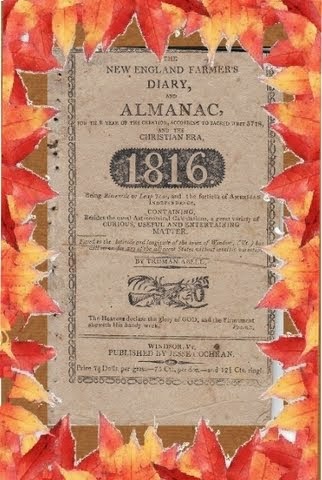After the French and Indian War, it was clear that the land north of Northfield on the west side of the Connecticut River did not belong to Massachusetts, thanks to the boundary line created by King George II’s surveyors in 1740. New Hampshire and New York proceeded to squabble over that territory until Vermont became the 14th state in 1781. Massachusetts actually had more right to that land than any other colony, since it had bought and paid for a good chunk of future Vermont in 1735, and sent soldiers to help defend the fort at Number 4 during the French and Indian Wars.
Regardless, after the French and Indian Wars, the territory west of the Connecticut River was ripe for settlement. In 1761, Governor Benning Wentworth, of New Hampshire, granted charters that created 63 towns in what would become Vermont. Wentworth wanted to get a jump on New York, who had equal and even more valid claim to the same properties. Governor Wentworth sold each charter to a group of sixty grantees, who each paid a him a fee of £20, which was a significant amount of money. In addition, he kept two shares of each town for himself. To guarantee that he would have the support of the church, he stipulated in the grants that each town set aside a share of land for the church. He was desperate for a title, so he named the towns after nobility in England, in hopes that some of them would support him in his quest to become a noble himself.
Benning Wentworth was born, raised, and died in Portsmouth, New Hampshire. He went to Harvard College, and graduated fifth in his class, after having set a college record for accumulating the most fines for broken windows. He went back to Portsmouth after graduation and joined the family merchant business. The Wentworths imported wine from Spain, in trade for New Hampshire timber used to make ships’ masts.
New Hampshire was under the jurisdiction of Massachusetts until 1741, when Benning Wentworth became the first Royal Governor of New Hampshire. Although he made himself rich by selling the New Hampshire Grants, for most of his tenure he was well-liked by the people of New Hampshire, who called him “Uncle Benning”. (Virtual Vermont “Benning Wentworth” September, 2012
http://www.virtualvermont.com/history/bwentworth.html)
Governor Benning brought some drama into colonial Portsmouth in 1760, when he hosted a dinner party attended by some local guests, relatives, and a minister. His wife had died 5 years earlier, and at this dinner, he announced that, at age 64, he was going to marry his 23 year old servant girl, Martha Hilton, and asked the minister at the dinner party to marry them. Martha and Benning Wentworth remained married for ten years, until Benning Wentworth died. Martha inherited his property, but she kept it in the Wentworth family by marrying Michael Wentworth, Benning’s cousin. She and Michael had one daughter, also named Martha, who died unmarried in London, England in 1851. Wentworth also had three children by his first wife, but they all died young.
Although residents of Portsmouth were amused at “Uncle Benning’s” May-December marriage to Martha Hilton, the citizens of colonial New Hampshire began to get sick of the corruption and high taxes that were such a part of Governor Benning Wentworth’s administration. In 1767, Benning Wentworth resigned, and he died three years later.
This is Governor Wentworth. He was a stout man, but his clothing here is padded to make him look even larger. In these days, being overweight was a sign of being wealthy, and apparently he did not think he was large enough to seem as wealthy as he was. You can sort of tell if you look at this picture that his stomach could be padding.
This is Martha Hilton.




